|
The Strange Case of the Hanover High Shocker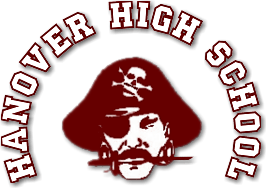 In May of 2000, it was reported in the local paper that thirty-four students who had attended Hanover High School in Pennsylvania had had their pictures taken for the school yearbook giving an obscene gesture. The principal, John P. Cokefair, had sent a letter to the thirty-four students' parents explaining that because of the preponderance of this gesture in the photos, the offending photos would be re-taken, without the gesturing students, and these students would bear the cost of the re-shoot.
In May of 2000, it was reported in the local paper that thirty-four students who had attended Hanover High School in Pennsylvania had had their pictures taken for the school yearbook giving an obscene gesture. The principal, John P. Cokefair, had sent a letter to the thirty-four students' parents explaining that because of the preponderance of this gesture in the photos, the offending photos would be re-taken, without the gesturing students, and these students would bear the cost of the re-shoot.
Additionally, the students were to recieve community service for a day, and seniors who did not show up would be denied their diplomas, while truant underclassmen would be given a three-day suspension. An outsider who hears this story naturally asks the same question: How were thirty-four students able to give the finger and not get caught until it was necessary to replace the photos? Therein lies the interesting fact of this event; the gesture in question was not the middle finger, but a gesture known in certain circles as "the shocker". Principal Cokefair explained in his letter that the reference was "so horrific" that some students could not even speak of it. His letter explained, "perhaps your child will elaborate when you have a talk about this matter." In fact, the photos had been taken throughout the year, but were undetected as anything meaningful until some team photos were brought to the attention of the administration by a faculty member in the athletic department. Once the meaning was known, the yearbook had become a minefield of obscenity and deplorable references; the Principal had felt he must act.
Congratulations, you are now making "The Shocker". It is a gesture meant to indicate a sexual act, wherein the first and second fingers enter a vagina, while the errant pinky plunges into the anus; hence the "shock". The gesture, the province of minds quite filthy in nature, has taken on other, more explicit names: "Two in the pink and one in the stink", "two in the coot and one in the boot", "going to town with one in the brown". Yes, quite rude, quite crude... but a minimal impact, considering its relative obscurity and difficult explanation. You can imagine Cokefair's eyes tearing up with anger as he flipped through the photographs; smiling faces, blushing with youth and vitality, innocently holding up a signal representing digital sodomy and sexual manipulation. The despair in the room, the struggle to decide what to do, must have been palpable. For their own part, students claimed several defenses to the local press; that some didn't know what the meaning of the gesture was (quite likely), that it had been done in previous yearbooks with no punishment (and it had), and that the punishment was, after all, inherently cruel. A parents' meeting was quickly announced by the school board for the following tuesday, allowing the parents to vent their anger or sound their agreement with the chosen punishment.
"The yearbook is designed as a documentary, memorial or historical book," she said. "No person or persons" should be permitted to remove photographs; it was tantamount, she said, to removing mentions of slavery from history books because "it makes America look bad." Why not simply airbrush out the gestures themselves, a cost which the offenders could bear, and which could be done without sacrificing the many photographs that had been taken? Ms. Klunk concluded with her brilliant offered comprimise and gave back the floor. Then rose Steve Sheppard. A parent and self-described "representative of the parent community", he proceeded to read Cokefair's letter to the attendees of the room, because not all had had the opportunity to read it. He dismissed the idea that the children were "innocent babes", but questioned why their silly joke must cause such revisionism in the yearbook. He refuted the idea of making the students drive back from Senior Week to do community service, questioning the safety of such a request. He pointed out that the plan as stated by the Cokefair letter was that not only would the students be not allowed in the re-taken photographs, but their names would cease to appear next to them, even under a "missing" header. In other words, as he put it, the school district would "destroy a piece of our history".
No doubt, Cokefair saw the writing on the wall as the applause faded. By June, the board had spoken. The students were not to be given community service, and the photos would not be replaced (although in some cases new photographs had been taken in anticipation). Instead, Klunk's suggestion ruled the day: the students' obscene gestures would be airbrushed from the photos, artistic siphoning of the horrifying incident. The students would also recieve six hours of after-school detention. What happened next is, like all back-room intrigue, up to interpretation. Fingers were pointed, accusations made, numerous angry calls and conferences between the administrators of the school. To the outside world, and even the parents, things seemed to die down. Until July. His authority questioned, his declarations anulled, and his good name now inextricably linked with this digital obscenity, John Cokefair did what any self-respecting man would do. He resigned.
And as for whether he was jumped or pushed, Cokefair claimed he had been given a gag order (an accusation which the school board denied) and refused to discuss details other than to intimate to the local paper about the event: "That probably was the most shining example of the lack of respect I was receiving....it was a crowning star and I sincerely hope that Dr. Bortner (the new superintendent Michele Bortner) is able to convince the board to respect their principals." Even now, in this future age, when the events have settled into history and the decisions and battles are now trapped in the amber of lore, it is best to realize how even the littlest fights can erupt into life-changing battles, with collateral damage to careers and reputations, driving men and their families from a community, never to return. Surely, that is the greatest "shocker" of all. |
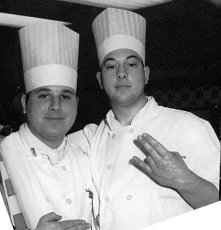 It would be best at this juncture to assist the unknowing (feel no embarassment) as to the formation and reference of "the shocker". Let's start with your outstretched hand, palm up. Take your ring finger (next to the pinky) and touch it to your thumb. It is as if you're making an "OK" symbol with the wrong finger. Now, flatten your finger and thumb a bit, while your first, second and pinky fingers remain straight up. Rotate your hand a little, so your straightened fingers are pointing somewhat sideways.
It would be best at this juncture to assist the unknowing (feel no embarassment) as to the formation and reference of "the shocker". Let's start with your outstretched hand, palm up. Take your ring finger (next to the pinky) and touch it to your thumb. It is as if you're making an "OK" symbol with the wrong finger. Now, flatten your finger and thumb a bit, while your first, second and pinky fingers remain straight up. Rotate your hand a little, so your straightened fingers are pointing somewhat sideways.
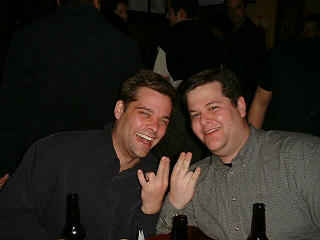 One hundred parents and students showed up. One hundred! The tone was obvious, the intent soon laid out: removal of the photos was not the answer. This tone found a voice in one Kate Klunk, the lone student representative on the school board. That night had been bittersweet for her; while this debate raged on, she had also been awarded a certificate for two years of service on the board. But she saw through the fog of anger and spoke. And her words held weight and meaning.
One hundred parents and students showed up. One hundred! The tone was obvious, the intent soon laid out: removal of the photos was not the answer. This tone found a voice in one Kate Klunk, the lone student representative on the school board. That night had been bittersweet for her; while this debate raged on, she had also been awarded a certificate for two years of service on the board. But she saw through the fog of anger and spoke. And her words held weight and meaning.
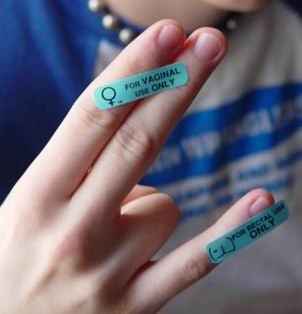 Sheppard's speech was interspersed with applause at several points, and upon conclusion he was given a standing ovation.
Sheppard's speech was interspersed with applause at several points, and upon conclusion he was given a standing ovation.
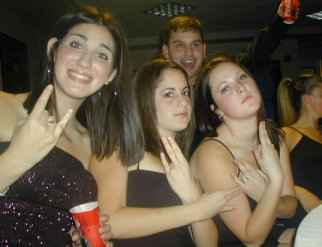 In the heat of the Hanover summer, Cokefair submitted a letter to school district authorities and officials, citing the Shocker incident, and the ensuing fiasco, as reason enough to seek employment elsewhere. Cry not for him, for he found solace and waiting arms in his previous employer, the Williamsport High School, three restful hours away. His pay would be nearly the same, although he would be one of several co-principals, no longer the single lord and renovating spirit he had been at Hanover. No doubt, this was a tough sword to self-administer at age 50, a time when your days should be spent walking the hallways, assisting the problem students, disciplining the bad eggs, making the inspiring speeches at pep rallies.
In the heat of the Hanover summer, Cokefair submitted a letter to school district authorities and officials, citing the Shocker incident, and the ensuing fiasco, as reason enough to seek employment elsewhere. Cry not for him, for he found solace and waiting arms in his previous employer, the Williamsport High School, three restful hours away. His pay would be nearly the same, although he would be one of several co-principals, no longer the single lord and renovating spirit he had been at Hanover. No doubt, this was a tough sword to self-administer at age 50, a time when your days should be spent walking the hallways, assisting the problem students, disciplining the bad eggs, making the inspiring speeches at pep rallies.